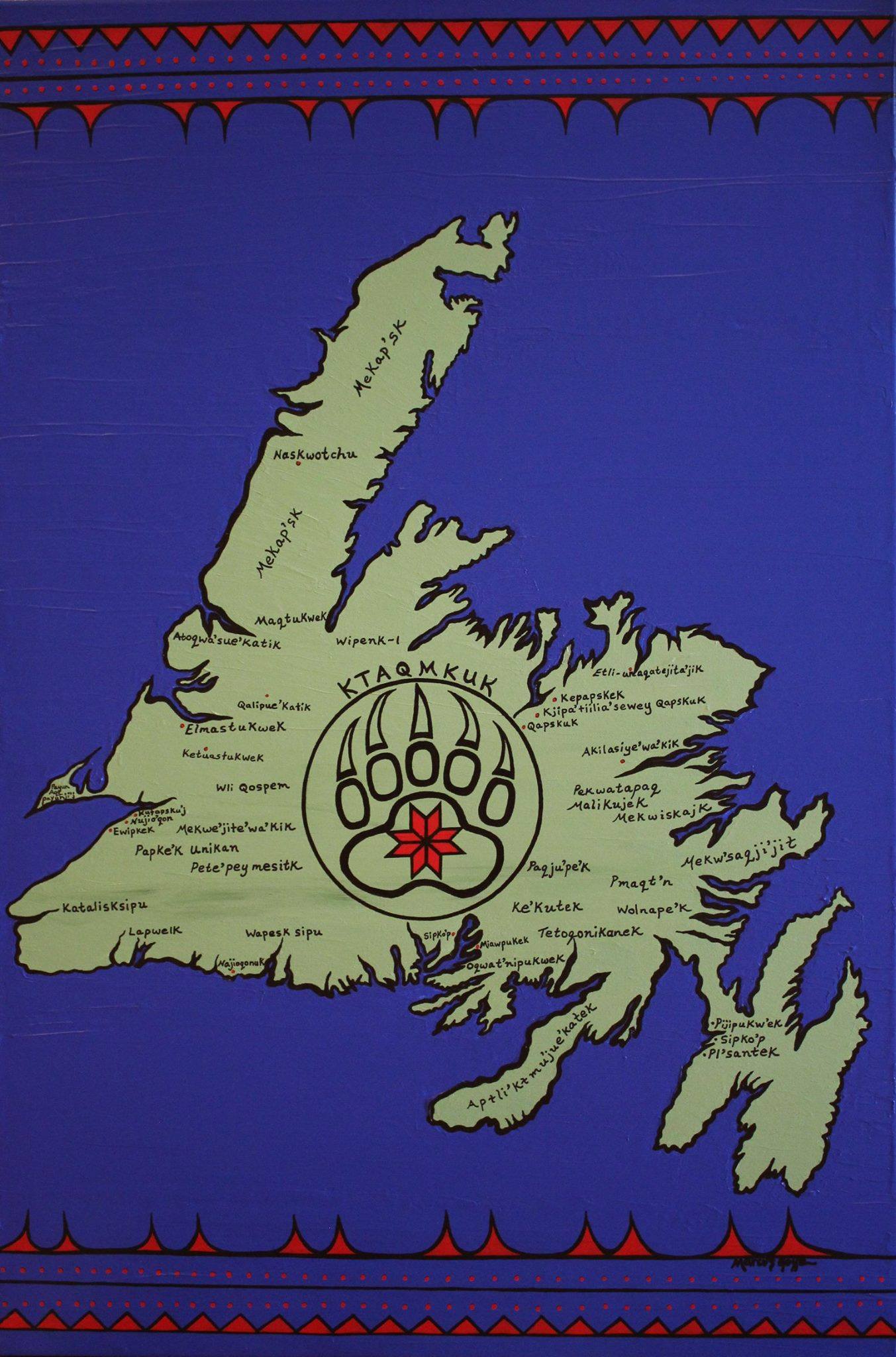Mi'kmaw in Newfoundland

A brief recount of Mi’kmaq History
Source: Artist: Marcus Gosse, Title: “Ktaqmkuk (Newfoundland) - A Part of Mi’kma’ki (Mi’kmaq Territory)”(© 2017).
Grandmother to Grandchild, father to son, cousin to cousin; storytelling and oral tradition have been the way that Mi’kmaw history has been passed down from generation to generation. Oral histories reccount that Mi’kmaq people have been in Newfoundland since time immortal. Today’s society values the written word over oral recounts. The earliest journals and logs of European Explorers document the presence of Mi’kmaq on the shores of Newfoundland. While these logs can state the existence of a “savage” onshore, they certainly do not document or record the intricacies of Mi’kmaw history, culture, and presence on the Island of Newfoundland.
There are many stories of Mi’kmaw travelling from Cape Breton to Newfoundland for seasonal hunting. Ktaqamkuk (Newfoundland) severed as an extended territory of Wunama’kik (Cape Breton) where in the summer, Mi’kmaw hunters would travel across the Cabot Straight to hunt, trap and fish in Newfoundland. This annual traverse across the ocean was seasonal for most however, there were eventually Mi’kmaq who choose to stay and settle year-round on the island developing the first permanent Mi’kmaq setters to Ktaqamkuk (Newfoundland).
Mi’kmaq had traditionally travelled by birchbark canoe across the ocean via St. Paul’s Island, Nova Scotia to Cape Ray, St. George’s Bay, and surrounding areas. Arriving on the island, they did not announce their presence or make themselves known to European settlers, they preferred to go about their travels and migrations unnoticed, surviving off the land and caring for their families.
The Mi’kmaq living in Acadia had been longstanding, unofficial allies of the French. While it was not a close alliance, the French were, for the most part, respectful and amicable when dealing with Indigenous people. As a result of this, many Mi’kmaq were speaking French as a second language. In Newfoundland, this amity resulted in many recorded cases of French men marrying Mi’kmaq women. While under British rule many French and Mi’kmaq identified themselves as English subjects to protect themselves, phasing out French as the language of choice in their homes. While there are few French-speaking Mi’kmaw families in Newfoundland today, there continue to be strong ties between francophone and Mi’kmaw culture in Newfoundland.
After contact, many Mi’kmaw families which began to adopt European habits and travel on European ships were incorrectly identified as Acadian setters. This was most likely done by choice and not by mistake, identifying as an Acadian settler ensured them safe passage, eliminated racism and stereotyping, and generally made the lives of the Mi’kmaq easier when they acted as Europeans. These false identities were made easier because many Mi’kmaq families were baptized into the Catholic Church and given Christen names and surnames. However, acting like Europeans and being forced to hide one’s true identity, culture and language greatly impacted Mi’kmaq families in Newfoundland. The erasure and assimilation of culture was significant and long-lasting. Many Mi’kmaw families in Newfoundland were lied to about their true identities for generations with only in the past several years the truth coming to light about their family histories.
Mi’kmaw culture has undergone a significant revival in the past quarter-century. While there is a long way to go, there has been a strong and unrelenting effort of many strong Mi’kmaw people in Newfoundland to revive and rediscover their family histories which had been hidden from them.
